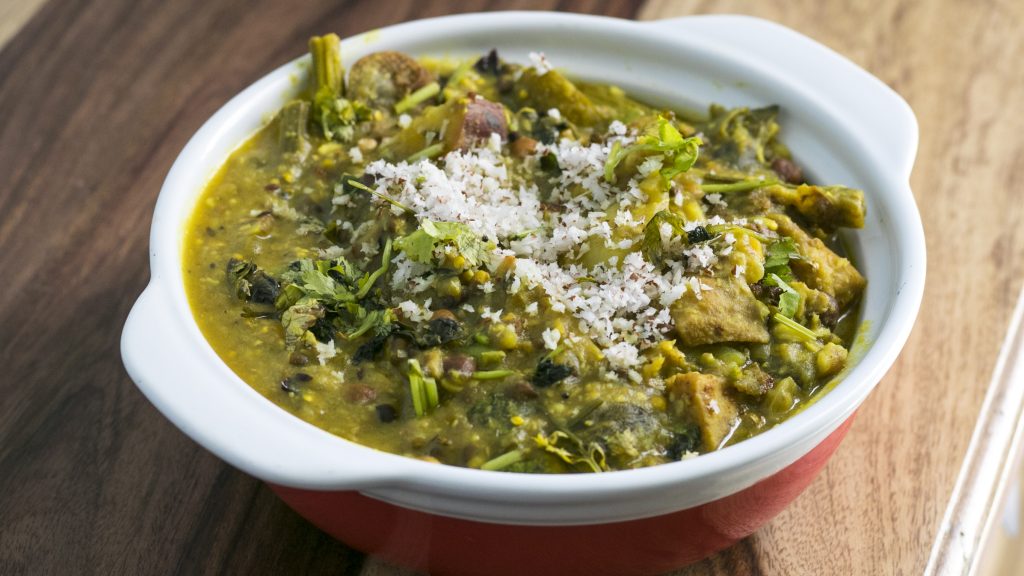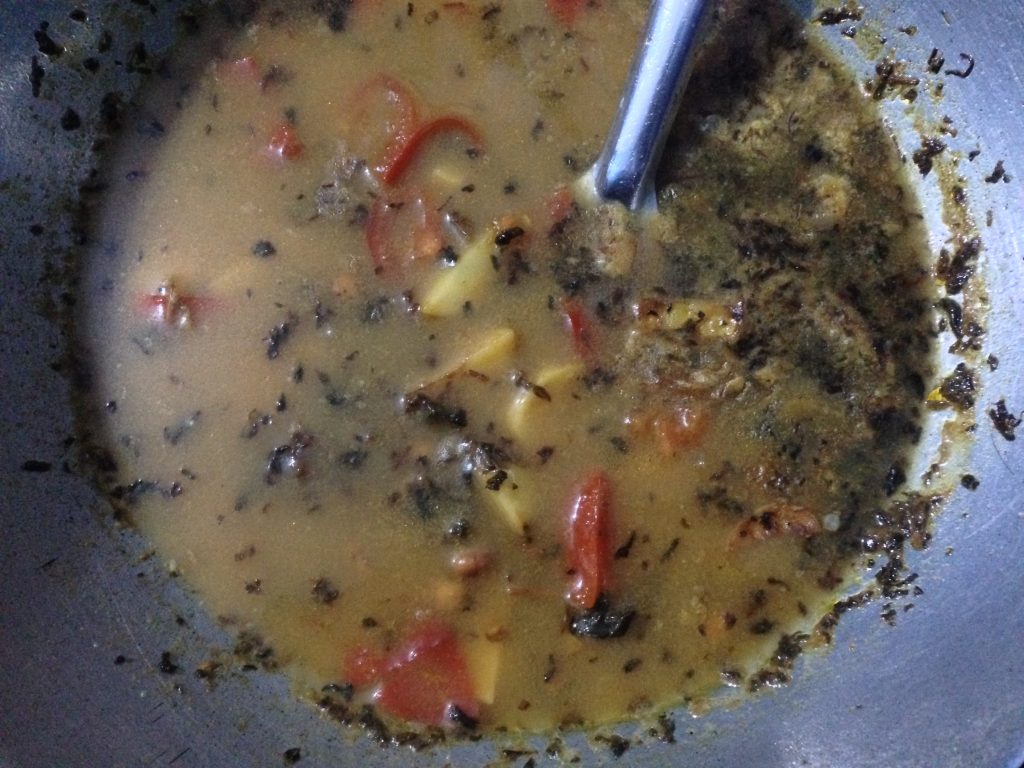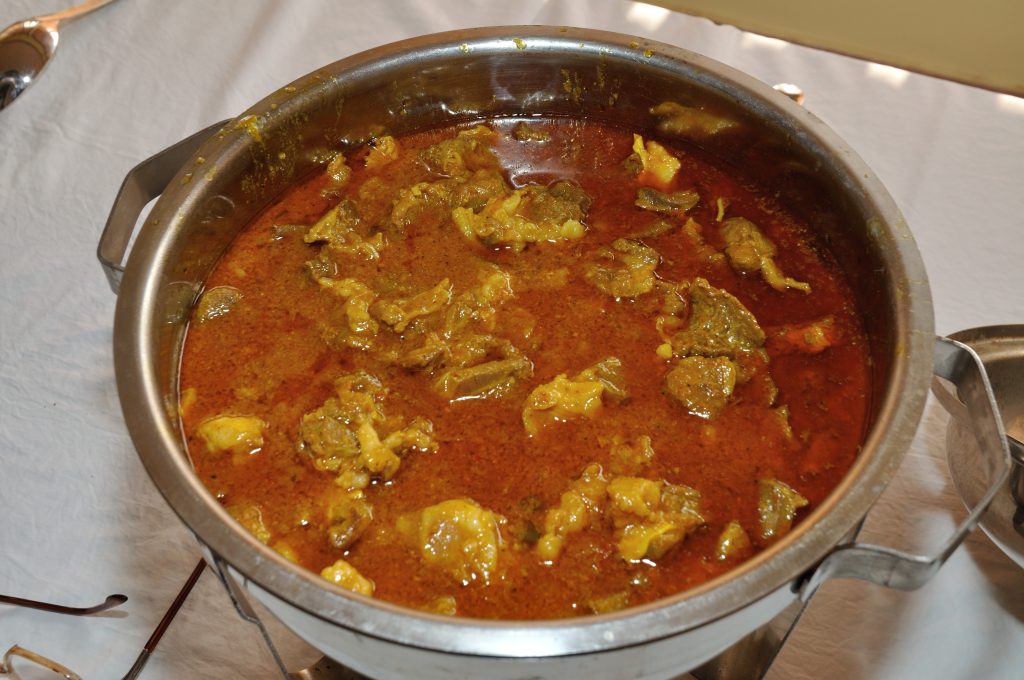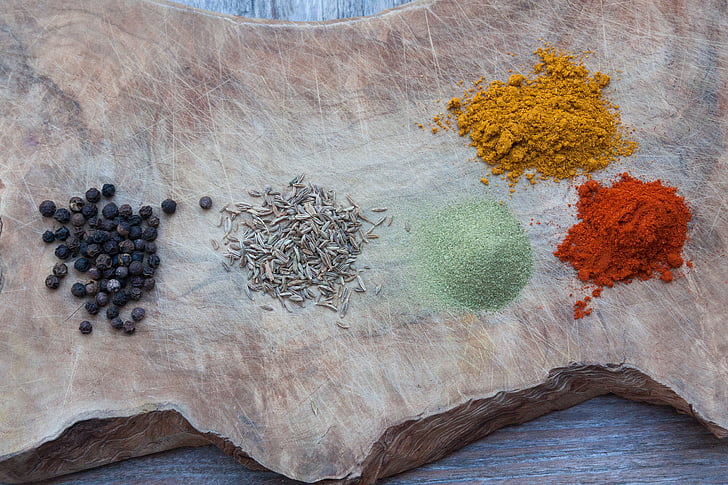Sharing the border with Tibet, China, and India, Nepal takes massive inspiration from these nations that influence their food styles and varieties. Generally, Nepali food takes close inspiration from Indian dishes, but they vary in flavor and aroma.
Even though the cooking styles are similar, Nepal represents a unique taste and is much healthier. Nepal also has curry, one of the staple foods eaten at least once daily in every Nepali household.
When you think of Nepali curry, they do not have mashed or pureed ingredients as in Indian curry. Furthermore, Nepali curries usually have a more crunchy texture and thin gravy. The staple dish is Daal, Bhaat, and ra Tarkari (Lentils, Rice, and Curry). Also, the curry (tarkari) can have various types and flavors with veg and non-veg options.
Top Three Curry Recipes Around Nepali Household
Yes, Nepal also uses a variety of curry powders for their curry dishes depending upon what they are cooking. For those unknowns, curry powder is a blend of different spices that combine to give a warm and robust flavor to whatever dish it is used in.
You can find these curry powders in any local market or even prepare one yourself at home. Typically, a curry powder consists of spices such as cloves, cardamom, ginger, caraway, ajwain seeds, star anise, black pepper, mustard seeds, mace, sesame seeds, and cinnamon. Here, you can also mix other spices of your choice, like nutmeg, fennel seeds, dried basil, poppy seeds, saffron, and many more.
Altogether, you can make some delicious Nepali curry from almost everything. Additionally, the dishes range from veg to non-veg items. Below are some of the curry dishes in detail.
Karkalo Ko Tarkari (Taro Leaves Curry)
It is one of Nepal’s most delicious gravy curries, made from Karkalo leaves. As a fun fact, it is widely produced in Nepal during Panchami during the Teej festival.

As tasty as this curry is, it is equally difficult to cut, clean, and prepare to cook. Well, this plant has the presence of toxic calcium oxalate crystals, and hence, some people get allergies and itchiness just by touching it.
Hence, it should never be eaten raw and should be handled carefully. But yes, they are entirely safe to eat after cooking them.
Ingredients Needed
- Taro Leaves with stem (Karkalo ko bot)
- Tender Taro leaves (Gava)
- Two tablespoons of Mustard Oil
- 1/2 tablespoon of Fenugreek Seeds
- Two whole red chilies
- Salt to taste
- Onion, garlic, and curry powder
- A tablespoon of lemon or Lime Juice
- Optional: Taro root (Pidalu), 1/2 tablespoon of Jimmu, a cup of Sano Kerau (green peas)
Recipe
- Thoroughly wash the Karkalo plant and clean it. If you like, you can also take its root (Pidalo) and clean and cut it into the desired shape.
- Only take the tender leaves of the plant and leave the matured ones.
- Roll a stem into loose knots when the plant is dry, then tuck both ends to form rounds.
- Pull the fibers off the steam and cut them into your desired shape.
- Take a pressure cooker and add the oil to it. After the oil heats up, add fenugreek seeds and roast them till they turn slightly brown.
- Then, chop your onions and fry them till they get slightly golden.
- Add garlic paste and chilies and also your curry powder. Mix them all well, then add the taro leaves and fry them.
- After ten minutes, add water to your mixture and close the lid. Let it cook for ten to fifteen minutes.
- Now, your tarkari is ready, and top it off with a little bit of lemon or lime juice.
Gundruk Aloo Bhatmas Curry
Gundruk is a fermented green vegetable made out of spinach and is the national dish of Nepal. You can make it with Gundruk or even add bhatmas (soybean). Furthermore, you can also make it as a curry or a pickle.

It has a sour taste and goes perfectly well with Dhido. Its soup is famous during the winter cold, and this dish is mainly made when green vegetables are not in stock.
Ingredients Needed
- Gundruk (2 fist full)
- Four potatoes
- Two chopped tomatoes
- 100 gm. of soybeans
- 5 cloves of fresh garlic
- 6 tablespoons of oil
- 2 teaspoons cumin powder
- 2 teaspoons coriander powder
- 1 teaspoon chili powder
- Salt to taste
Recipe
- Peel, clean, and cut the potatoes into an inch cube size. Take the gundruk and soak it in water for ten to fifteen minutes.
- First, fry your soybean in little oil and keep it aside.
- Now, heat your pan again, and add oil. Then, add the potatoes and fry them until they are golden brown. Another way with potatoes is to mash and fry them for a thick texture.
- After that, add onions and fry them. Add turmeric powder and salt to your taste, and then add your soybeans and tomatoes.
- Cook them for a few minutes, and add curry powder, chili, and garlic. Then add your gundruk and fry them for a few more minutes.
- Lastly, add water and let it boil for ten solid minutes.
Khasi ko Masu ko Jhol (Mutton Curry)
Mutton curry is one of the most loved curry options in Nepal. It is perfect for chilly winters. Nepalese cooks mutton with its bones, fats, and lean meats altogether.

Also, they usually use pressure cookers, but if you are not using this, you must cook your curry longer. Mutton has a deep flavor and doesn’t require many spices to enhance the flavor.
Ingredients Needed
- ½ kg Mutton pieces (with bones)
- 1 finely sliced onion
- 2-3 medium size Tomatoes
- 1 tbs Garlic and Ginger paste
- 3-4 Cloves
- 3-4 Green Cardamoms
- 1 Cinnamon stick
- 3 Bay leaves (Tejpata)
- 1 tsp Fenugreek seed
- 1 tbs Meat Masala
- 1 tsp Garam Masala
- 1 tsp Red Chili powder
- 1 tsp Turmeric powder
- 2 tbsp Vegetable Oil
- 1 tsp Butter/Ghee
- Salt to taste
- Freshly chopped coriander leaves
Recipe
- In a pressure cooker, heat vegetable oil. Add cloves, green cardamom, cinnamon, bay leaves, and fenugreek seed. Fry them all for a few seconds until they get aromatic.
- Add finely chopped onions and fry them until they are slightly golden. Then, add ginger paste, garlic paste, and turmeric powder.
- Add the mutton and cook them for five to ten minutes with occasional stirring.
- As the meat gets brown, add salt as per your taste, tomatoes, and red chilies. Cook them until the tomatoes are soft, then add garam masala and meat masala.
- Lastly, stir and add water to the mixture and close the lid. Let it cook for around four whistles, then turn off the gas. As you serve, you can garnish it with chopped coriander leaves.

